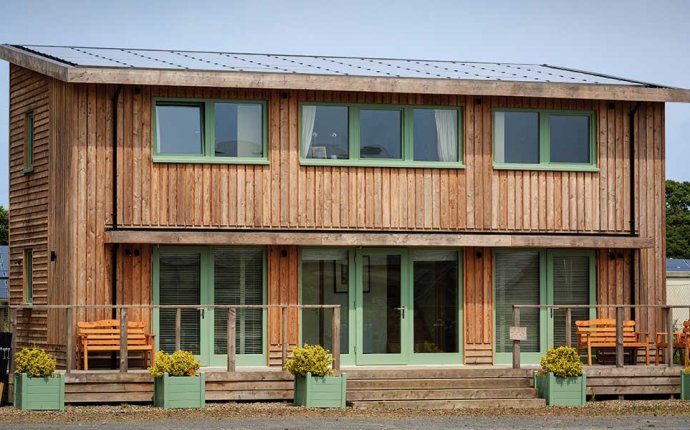
Building a Solar-powered Home
Passive solar design takes advantage of a building’s site, climate, and materials to minimize energy use. A well-designed passive solar home first reduces heating and cooling loads through energy-efficiency strategies and then meets those reduced loads in whole or part with solar energy. Because of the small heating loads of modern homes it is very important to avoid oversizing south-facing glass and ensure that south-facing glass is properly shaded to prevent overheating and increased cooling loads in the spring and fall.
Energy Efficiency First
Before you add solar features to your new home design or existing house, remember that energy efficiency is the most cost-effective strategy for reducing heating and cooling bills. Choose building professionals experienced in energy-efficient house design and construction and work with them to optimize your home’s energy efficiency. If you’re remodeling an existing home, the first step is to have a home energy audit to prioritize the most cost-effective energy efficiency improvements.
Site Selection
If you’re planning a new passive solar home, a portion of the south side of your house must have an unobstructed “view” of the sun. Consider possible future uses of the land to the south of your site—small trees become tall trees, and a future multi-story building can block your home’s access to the sun. In some areas, zoning or other land use regulations protect landowners’ solar access. If solar access isn’t protected in your region, look for a lot that is deep from north to south and place the house on the north end of the lot.
How a Passive Solar Home Design Works
In simple terms, a passive solar home collects heat as the sun shines through south-facing windows and retains it in materials that store heat, known as thermal mass. The share of the home’s heating load that the passive solar design can meet is called the passive solar fraction, and depends on the area of glazing and the amount of thermal mass. The ideal ratio of thermal mass to glazing varies by climate. Well-designed passive solar homes also provide daylight all year and comfort during the cooling season through the use of nighttime ventilation.









